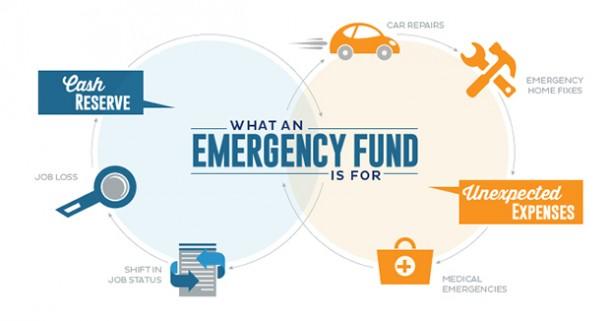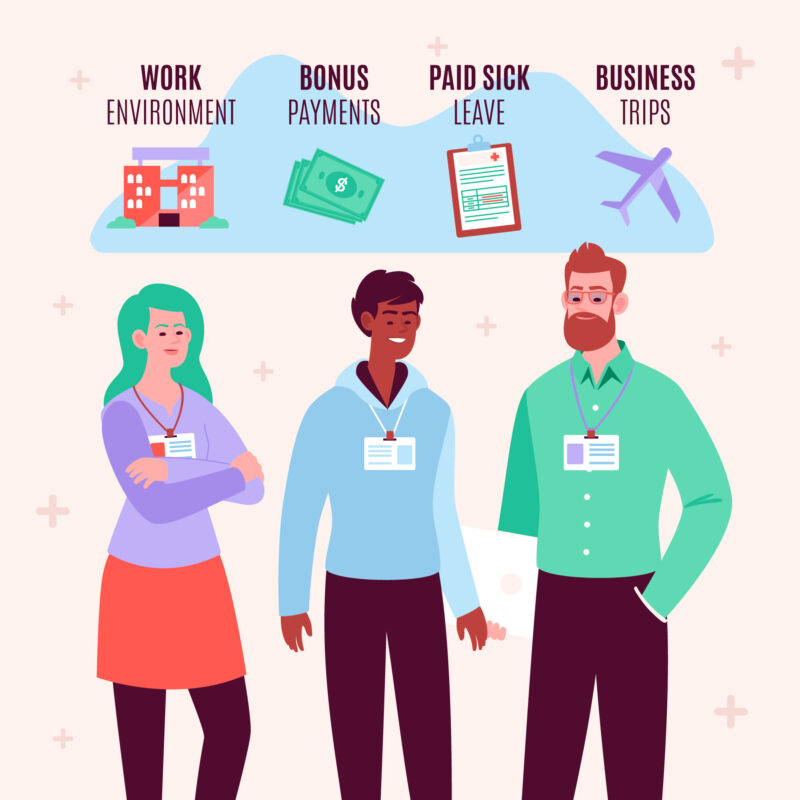Introduction

If you’re a young professional navigating the early years of your career, you’re likely juggling promotions, rent or mortgages, new relationships, maybe even starting a family. And amidst all that hustle, there’s one financial safety net that often gets overlooked: the emergency fund. The uncomfortable truth is this: most young professionals have no emergency fund — and ignoring one could leave you vulnerable when trouble strikes.
In this essay-style post, we’ll explore why many young professionals don’t build emergency savings, what risks that creates, and how you can start one before a crisis forces your hand. It’s designed to feel relatable — because you’re not alone—and actionable so you can leave this article ready to act.
Urgent Alert: Your Credit Score Is Worse Than You Think 1
Why most young professionals have no emergency fund
There are several interconnected factors contributing to the alarming lack of emergency savings among younger career-builders. Let’s unpack them.
High cost of living and inflation pressure
A recent study found that among younger adults (ages 18-29) only around 36 % had enough emergency savings to cover 3 months of expenses, compared to 72 % of those age 60+. (Federal Reserve Bank of St. Louis) Rising rents, student debt, essential costs and inflation leave little leftover for savings.
Prioritising debt, lifestyle or short-term goals
Surveys show many young adults say they prioritise paying down debt or enjoying life over saving for a rainy day. One research piece noted that households without emergency savings are much more likely to experience financial hardship.
Income volatility and limited financial capability
In many early-career roles, income may not be stable, or hours may fluctuate. Research indicates that unpredictable income severely hampers savings ability. (arXiv) Also, younger adults may lack financial education or habits around saving, making emergency fund building less likely.
The “I’ll start later” mindset
Often young professionals think: “I’ll save once I’m settled, once I have a promotion, once the mortgage is paid”. That delay mentality means the emergency fund never becomes real. Meanwhile, unexpected expenses happen.
Lack of dedicated savings goal or system
Without a specific plan — a dedicated fund labelled “emergency” with set contributions — saving becomes optional rather than automatic. Research shows people with no emergency savings are far likelier to struggle with bills or go into debt when a shock hits.
The serious cost of no emergency fund for young professionals
Not having an emergency fund is more than a “gap” — it creates real risks and costs, especially when you’re early in your career.
- Debt escalation: Without savings you’re forced to rely on credit cards, high-interest loans or family help when something unexpected happens.
- Interrupted progress: A job loss, medical bill or major repair without a fund can sabotage your path — derailing investments, forcing asset sales or delaying growth.
- Lost opportunities: You may be unable to take advantage of new career options, start a side-business or change jobs because you don’t have the buffer.
- Increased stress & health impact: Financial instability links to poorer mental and physical health.
- Long-term wealth drag: Every time you have to pull from weak savings or take on debt, you give up compound growth or pay extra in interest.
- Reduced resilience: As younger professionals you may think you’ll “bounce back easily” — but trends show younger age groups have less savings to cover 3 months of expenses. (Bankrate)
The cost isn’t hypothetical — it’s tangible. And building an emergency fund is a proactive choice that protects your future.
Who should build an emergency fund — and how much is enough?
Why you, as a young professional, should treat an emergency fund as no
n-negotiable
- You’re in a phase of life with many transitions (job changes, relocation, life events) so your risk of financial shock is higher.
- You likely don’t have the large asset base older professionals may rely on.
- Starting early gives you financial advantage: the earlier you build the habit and buffer, the stronger your foundation.
How much should you aim for?
Experts often recommend saving between 3-6 months of essential living expenses. But for many young professionals with somewhat stable income, you might start with 1-3 months as initial goal, and build up. The key is to make progress rather than wait for “perfect”.
Here are some sample targets:
| Stage | Suggested Emergency Fund Target |
|---|---|
| Early career, single, stable job | 1-3 months of essential expenses |
| Mid-career, some dependents | 3-6 months |
| Self-employed/variable income | 6-12 months (or more) |
This table helps you pick a realistic target rather than a vague “sometime” goal.
How to start an emergency fund before a crisis hits
Here’s a practical, step-by-step plan to build your emergency fund as a young professional.
Step 1: Define your essential expenses
Write down your monthly “must-have” costs: rent/mortgage, utilities, groceries, transport, insurance, debt payments. This gives you the baseline for your fund target.
Step 2: Choose your initial target
Pick a starting goal (e.g., 1-2 months of essentials) that feels achievable but meaningful. Then plan to build to a higher target (3-6 months) over time.
Step 3: Automate contributions
Set up an automatic transfer from your paycheck or checking to a separate savings account (labelled “emergency fund”). Even small amounts matter—and automation reduces reliance on willpower.
Step 4: Adjust lifestyle to free up savings
Look at your budget:
- Cancel unused subscriptions
- Reduce non-essential spending
- Redirect raises/bonuses into the fund
- Consider side-income temporarily to boost the fund
Step 5: Keep the fund liquid but safe
Your emergency fund should be accessible (for true emergencies) but not too easy to spend. A high-yield savings account or money-market savings may fit. Avoid tying up too much in illiquid or high-risk assets.
Step 6: Allocate the fund distinctly
Treat this fund as separate from other savings (vacations, investing, home purchase). Use only for true emergencies (job loss, major repairs, medical bills) — not for “wants”.
Step 7: Review and build up
Monthly: check your progress. Quarterly: adjust your target if income changes. Annually: increase the fund size when job stability increases, family changes, or more financial obligations appear.
Overcoming common barriers for young professionals
Let’s face some of the typical excuses and how to handle them:
- “I don’t earn enough to save.” → Even saving $50-$100 per month matters. It’s about habit and momentum.
- “I’ll invest instead of saving cash.” → Investing is important, but you need a buffer. Dipping into investments during a crisis may cost you more. (morningstar.in)
- “I hate having money sitting idle.” → True. But the purpose of this fund is liquid resilience. Think of it as insurance.
- “I’ll start after my next promotion.” → Granting yourself a timeline often leads to delay. Start now, even small.
- “I might never need it, so why save?” → Emergencies are unpredictable. Having the fund gives freedom, not restriction.
Real-life scenario: young professional who built an emergency fund
Meet Evan, age 28, marketing associate, single, living in a city. He realised he had zero savings beyond his usual checking account. Recognising he was “one major expense away” from trouble, he took action:
- Calculated his essential monthly costs (~$2,500).
- Set an initial emergency fund target of $5,000 (≈2 months).
- Automated $250 per month from his paycheck into a separate high-yield savings account.
- Cancelled two subscriptions ($25/month) and diverted any freelance income into the fund.
- Six months later he had $1,500; at 20 months he hit his $5,000 target.
- Continued building toward $10,000 (≈4 months), while starting to contribute to his retirement account.
Now when his job role changed and his income temporarily dropped, Evan didn’t panic—he had the buffer and avoided taking on debt or dipping into his investments. Because he acted before a crisis, he gained stability.
How building an emergency fund now sets you up for long-term growth
Having an emergency fund isn’t just not losing money—it’s enabling you to grow. Here’s how:
- You can invest with more confidence, knowing your short-term needs are covered.
- You avoid high-interest debt when a shock happens, leaving you free to use income for growth rather than repair.
- You gain flexibility in your career: you can take that risk, switch jobs, start a side gig rather than stay stuck because you must “keep the income”.
- You reduce financial stress so you can think clearly, instead of reacting—research shows those with low savings report “finances control their lives often or always”. (files.consumerfinance.gov)
In other words: the emergency fund isn’t the finish line—it’s the foundation for the next stage.
Conclusion
For many young professionals, the absence of an emergency fund isn’t about laziness—it’s about competing pressures, conflicting priorities, and lack of structure. But the cost of not having one is real and high. The good news: starting an emergency fund before a crisis hits is entirely possible, and it’s one of the best financial decisions you can make early.
Here’s your immediate action list:
- This week: Calculate your essential monthly costs.
- This month: Set a realistic initial emergency fund target.
- This month: Automate a contribution from your income.
- Next 6-12 months: Build the habit, review monthly, adjust as needed.
- Keep going: When you hit your initial target, raise the goal.
You may be early in your career, but you’re not too early. Starting now gives you time. Time for peace of mind. Time for growth. And time to not just weather a crisis — but to thrive despite.



